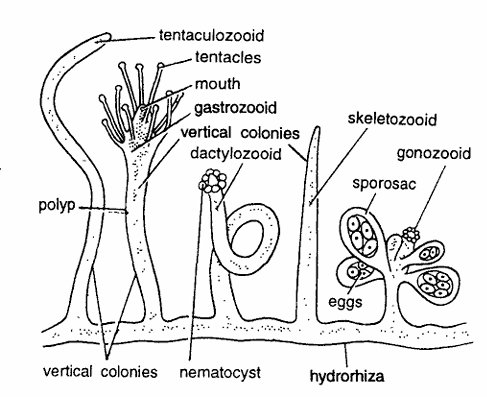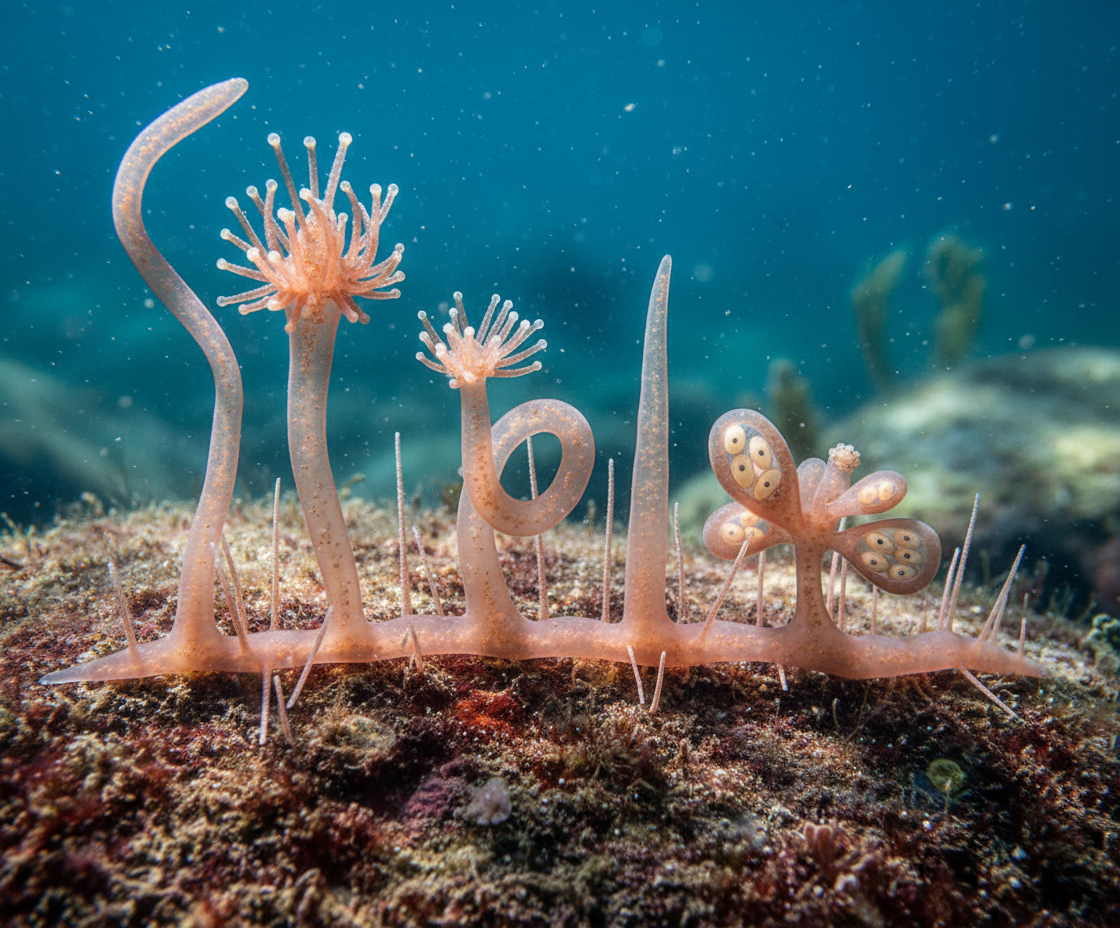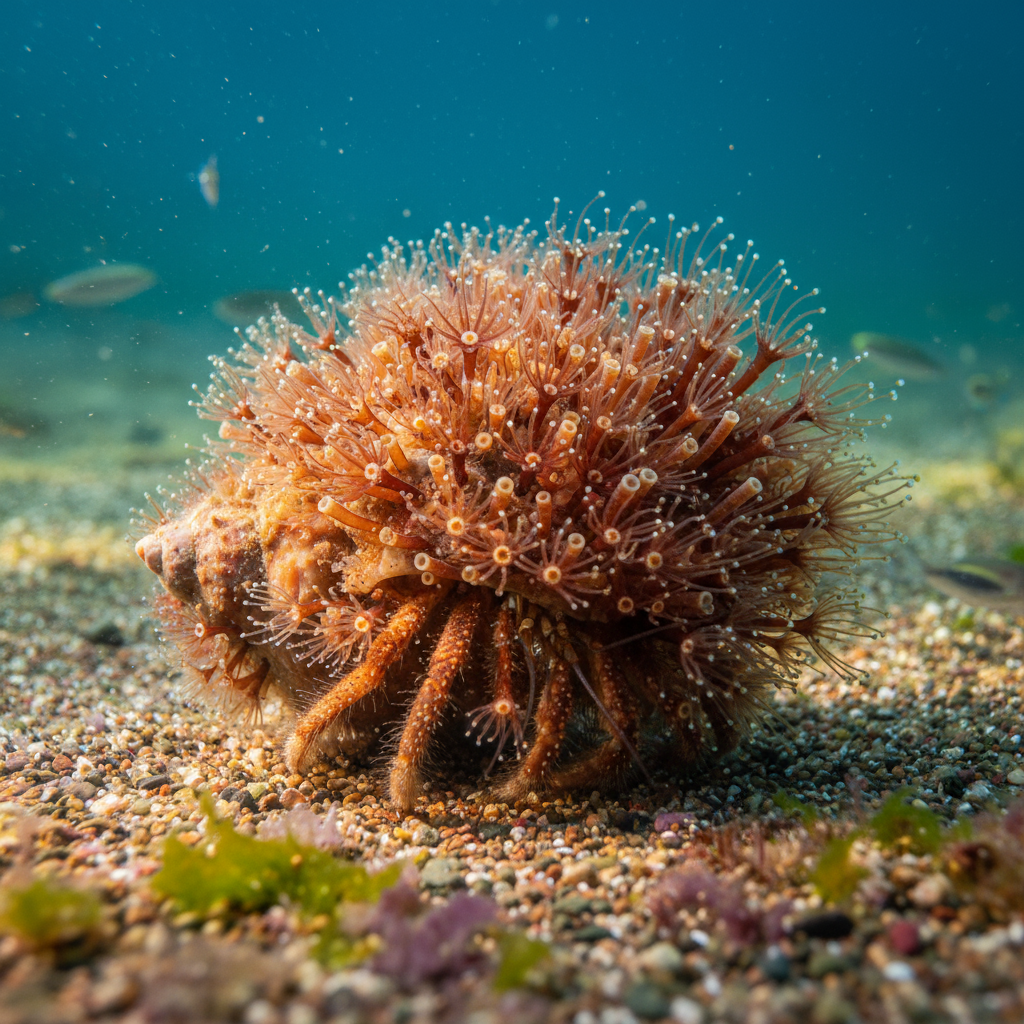Hydractinia: Classification, Habitat, Characteristics, and Identification
Hydractinia is a genus of colonial marine hydrozoans within the phylum Cnidaria. Known for its intricate colonial structures and symbiotic associations, Hydractinia species contribute substantially to benthic marine ecosystems and serve as model organisms for studying colonial biology and regeneration.
Classification of Hydractinia
- Kingdom: Animalia — Multicellular eukaryotic organisms with specialized tissues
- Phylum: Cnidaria — Radially symmetrical animals with cnidocytes (stinging cells)
- Class: Hydrozoa — Hydrozoans with polyp and medusa phases, predominantly colonial
- Order: Anthomedusae (Anthothecata) — Hydrozoans with athecate polyps
- Family: Hydractiniidae — Colonial polyps with diverse zooid types and complex integration
- Genus: Hydractinia — Marine colonial hydroids often associated with gastropod shells

Habit and Habitat
Hydractinia species predominantly inhabit shallow marine environments attached to gastropod shells, stones, or algae. Commonly, they colonize the shells of hermit crabs, forming symbiotic relationships and offering the host physical defense through their stinging polyps. These colonial hydrozoans thrive in coastal waters with moderate currents and abundant food supply.
Geographical Distribution
Hydractinia spans temperate to tropical coastal waters worldwide. Their widespread distribution covers the Atlantic, Pacific, and Indian Oceans, demonstrating ecological adaptability. Colonies are often found on exposed rocky shores as well as sheltered bays.

General Characteristics
- It consists of vertical colonies arising from hydrorhiza.
- Polyps arise separately from incrusted spiny hydrorhiza.
- It is noteworthy that stolons or hydrorhizae are fused, forming brown encrustation enclosed in perisarc which is raised into several spines. Perisarc is confined only in hydrorhiza. It shows polymorphism.
- Animal contains several zooids borne on unbranched pedicles.
- Zooids are of four kinds (i) gastrozooids (feeding polyps) having single whorl of tentacles and mouth, (ii) gonozooids (reproductive polyps) bearing clusters of sporosacs containing eggs. (iii) dactylozooids (protective polyps) and (iv) skeletozooids.
- Colonies consist of interconnected polyps specialized for feeding, reproduction, and defense.
- Polyps range from small gastrozooids responsible for capturing planktonic prey to larger dactylozooids possessing potent nematocysts for protection.
- Reproductive polyps produce medusoids that facilitate sexual reproduction and larval dispersal.
- Colonies exhibit polymorphism and functional division fostering increased efficiency.
- The body is radially symmetrical with cnidocytes abundantly distributed over tentacles and surface.
- Hydractinia displays notable regenerative capacities and colonial integration enabling recovery from damage.
Special Features
- H. echinata is found on gastropodan shells inhabited by hermit-crabs, which show commensalism but, according to Schijifsma (1935), the relationship is merely epizoic or facultative.
- Symbiotic association with mobile hermit crabs enhances mutual survival; Hydractinia gains mobility, and the crab receives defense against predators.
- Polymorphic colonies efficiently partition roles among polyps, an evolutionary advancement in colonial hydrozoans.
- Medusoid production aids in genetic diversity and colonization of new habitats.

Identification
Since the specimen has vertical zooids and all above features hence it is Hydractinia
Hydractinia colonies are identified through their habit of colonizing gastropod shells, their polymorphic zooids, and distinctive large defensive polyps. Microscopic examination revealing nematocyst patterns and colony morphology assists species-level identification.
References
- Marine Biology Texts on Hydrozoa
- Animal Diversity Web (ADW) — Hydractiniidae family
- Ecological studies on symbiotic relationships with hermit crabs

